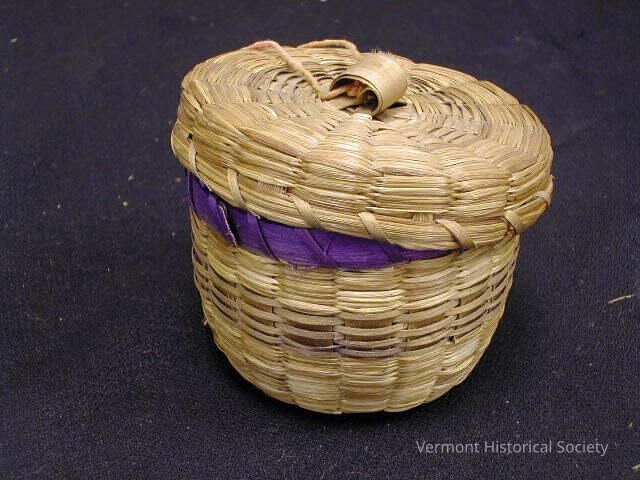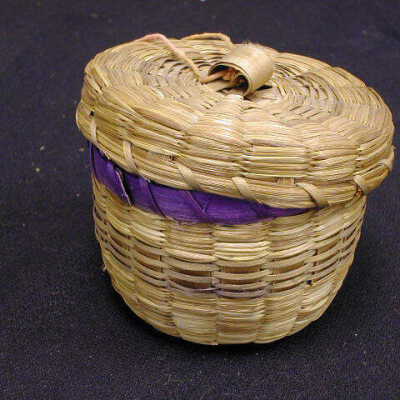Label
Abenaki Basket, Early 20th Century
Addison County
Ash, sweetgrass
Museum Purchase, #1990.33.5
Abenakis lived in communities throughout Vermont with village centers at Swanton and Highgate. They continued to maintain cultural identity and tradition in the face of new history publications that falsely erased them from the historical record and programs such as the Eugenics Survey that sought to remove them physically from the general population.
Abenaki people long participated in Vermont’s economy through the sale of goods and services. Some of the most iconic and recognizable goods included baskets, snowshoes, and canoes. The Sweetser family of Morrisville, with their unique baskets of a blended Abenaki and European design, went from local to national renown when wealthy tourists and collectors sought their products. The Obomsawin family, headed by patriarch Simon, made a name for themselves selling handcrafts to tourists visiting the exclusive Cedar Beach resort community on Lake Champlain.
Abenaki throughout the region sold traditional goods and served as guides for fishermen and hunters in the Green and White Mountains, and Quebec. To externally express an “Indian” identity, some Abenaki adopted dress based on that of Western Indians as this imagery was most recognizable to non-Abenaki residents and visitors.
